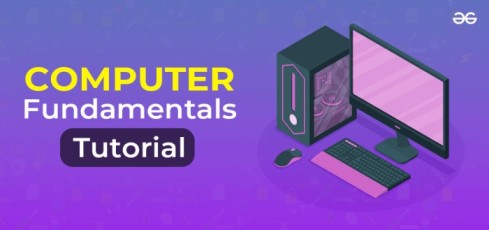Computer Basics
Introduction
Computer Basics have become an integral part of our daily lives. Understanding the basics of computers is essential for both personal and professional growth. This article covers the fundamental concepts, components, and functions of computers, helping readers build a strong foundation in computer literacy.
What is a Computer?
A computer is an electronic device that processes data, performing a variety of tasks based on instructions provided by software. It can store, retrieve, and process information, making it a versatile tool for various applications, from simple calculations to complex simulations.
Key Functions of a Computer
- Input: Receiving data and instructions from users or other systems.
- Processing: Performing calculations or manipulating data based on the given instructions.
- Storage: Saving data and instructions for immediate or future use.
- Output: Displaying results of processing to users or other devices.
Components of a Computer
Computers consist of several key components, which can be broadly categorized into hardware and software.
1. Hardware
Hardware refers to the physical components of a computer. Major hardware components include:
- Central Processing Unit (CPU): Often called the brain of the computer, the CPU performs calculations and processes instructions. It determines how fast a computer can operate.
- Memory (RAM): Random Access Memory (RAM) temporarily stores data that the CPU needs while executing tasks. More RAM allows for smoother multitasking and better performance.
- Storage Devices:
- Hard Disk Drive (HDD): A traditional storage device that uses spinning disks to read and write data.
- Solid State Drive (SSD): A faster storage device that uses flash memory, leading to quicker data access and boot times.
- Motherboard: The main circuit board that connects all hardware components, allowing them to communicate with one another.
- Input Devices: Devices used to enter data into the computer. Common examples include keyboards, mice, scanners, and webcams.
- Output Devices: Devices that output data from the computer. Examples include monitors, printers, and speakers.
2. Software
Software refers to the programs and applications that instruct the hardware on what tasks to perform. Software can be classified into two main types:
- System Software: This includes operating systems (e.g., Windows, macOS, Linux) that manage hardware resources and provide a platform for applications to run.
- Application Software: These are programs designed for specific tasks, such as word processing (Microsoft Word), spreadsheets (Microsoft Excel), and web browsers (Google Chrome).
Operating Systems
The operating system (OS) is crucial for managing hardware and software resources. It provides a user interface, allowing users to interact with the computer. Key functions of an operating system include:
- File Management: Organizing and managing files and directories.
- Task Scheduling: Managing the execution of multiple tasks and applications.
- Device Management: Facilitating communication between hardware devices and software applications.
- Security: Protecting data and resources from unauthorized access.
Computer Networks
- Local Area Network (LAN): A network that connects computers within a limited area, such as a home or office.
- Wide Area Network (WAN): A network that connects computers over large geographical distances, often utilizing public communication systems.
- Internet: The largest WAN, connecting millions of computers worldwide, allowing for global communication and access to information.
Internet Basics
The Internet is a global network that facilitates information exchange and communication. Key concepts include:
- Web Browsers: Software applications (e.g., Chrome, Firefox) used to access and navigate the internet.
- Websites: Collections of related web pages that are accessible via a web browser. They can provide information, services, and entertainment.
- Email: A method of exchanging digital messages over the internet, widely used for personal and professional communication.
Cybersecurity
As computers become more connected, cybersecurity becomes increasingly important. Basic cybersecurity practices include:
- Using Strong Passwords: Creating complex passwords and changing them regularly to protect accounts.
- Installing Antivirus Software: Protecting computers from malware and other security threats.
- Regular Updates: Keeping software and operating systems up-to-date to mitigate vulnerabilities.
Conclusion
Understanding the basics of computers is essential in today’s technology-driven world. From recognizing hardware components to grasping software functionalities and the importance of cybersecurity, these foundational concepts will enhance your digital literacy and prepare you for more advanced topics. As technology continues to evolve, staying informed and adapting to changes will be key to leveraging the full potential of computers in our lives.


1 thought on “Here’s a comprehensive article on Computer Basics”